Over the next few weeks you will begin to see “wet hopped” beers hit the shelves. Are you wondering why there is a sudden burst of new IPA’s on the shelves when malty Oktoberfests and roasty stouts start to fill the shelves for fall? Wet hopped beers use freshly picked hop cones and we are getting to the time of year when hops are ready to be harvested. Let’s back up a bit…
Hops are a vinous plant that spend all of the spring and early summer shooting runners up out of the ground. They like to grow vertically so they are often grown up suspended ropes or arbors. They are sun lovers and can grow over an inch a day! Later in the summer, the growth upward slows and the plants spend all their energy growing beautiful cones, which are used in the brewing process for bittering beers and producing the nose or aroma of most beers. These hop cones are extremely delicate and begin to decompose the moment they are picked off of the vine. Most hops are harvested, kiln dried, and then grinded up into pellets, which concentrates the resin or oils and allow them to be stored for months prior to usage.
For fresh hopped beers, the hops are picked off the vine and immediately used in the brewing process, most commonly within 24 hours. This is actually quite tricky for a variety of reasons. First off, no one knows when hops will be ready to harvest so it is difficult to schedule and plan for wet hop beer releases, brewers are at the mercy of Mother Nature. Also, since the hops are not grinded and concentrated, it can take 5-8 times as many wet hops to provide the same potency as pelleted hops. Along those same lines, pelleted hops are tested to determine their alpha acid levels, so brewers know the amount of bitterness a beer will have after brewing. Because of the time frame, wet hops do not have time to be tested so brewers do not know the exact level of bitterness the hops will contribute to the beer.
This all sounds like a lot of work, but a wet hopped beer is a unique tasting experience. It is difficult to describe what the addition of fresh wet hops adds to a beer. Fresh hops bring a vibrancy to the nose and flavor. There is another level of brightness that is achieved by these hops that just cannot be matched by dried or pelleted hops. These beers tend to be less in-your-face and carry a much higher level of finesse.
We homebrewed our first wet hopped beer this year. On the left, a picture at dawn on brew day, right before I picked my second year Centennial hops and first year Chinook hops. Middle is a shot of Ryan Turner, harvesting his Columbus and Willamette hops. The last shot is the entire harvest, 25 ounces of Wet hops and 4 ounces of dried hops (front left) from the 2012 harvest.
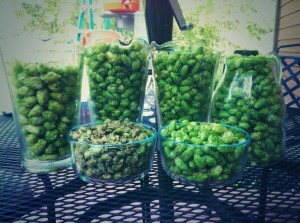
On the left, a picture of the hops in the wort at the end of the boil. We used pelleted hops at the beginning, which provide the bulk of the bitterness or IBUs. The wet hops were added at multiple points during the last 30 minutes of the boil, which means their main contribution will be in the nose or aroma. Ever wonder about the difference between wet hopping and dry hopping? Dry hopping is the additional of hops during the fermentation process, which can also add to the nose and bring another level to the mouthfeel. For this brew, we used wet hops to dry hop the beer, which you can see in the picture on the right.
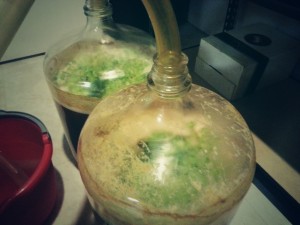
Keep an eye out for fresh hopped beers at your nearest craft beer store. Because of the freshness of the hops, these beers will never be better than the day they hit they shelves so buy them early and drink them up!
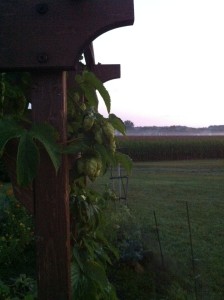
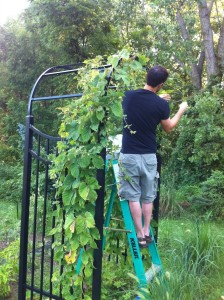
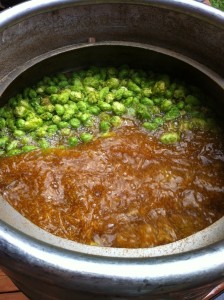
Pingback: Wet Hopped Category – GToCG 2013 | HereForTheBeer.com
If some one wishes expert view about running a blog after that
i recommend him/her to pay a quick visit this blog, Keep up the good job.